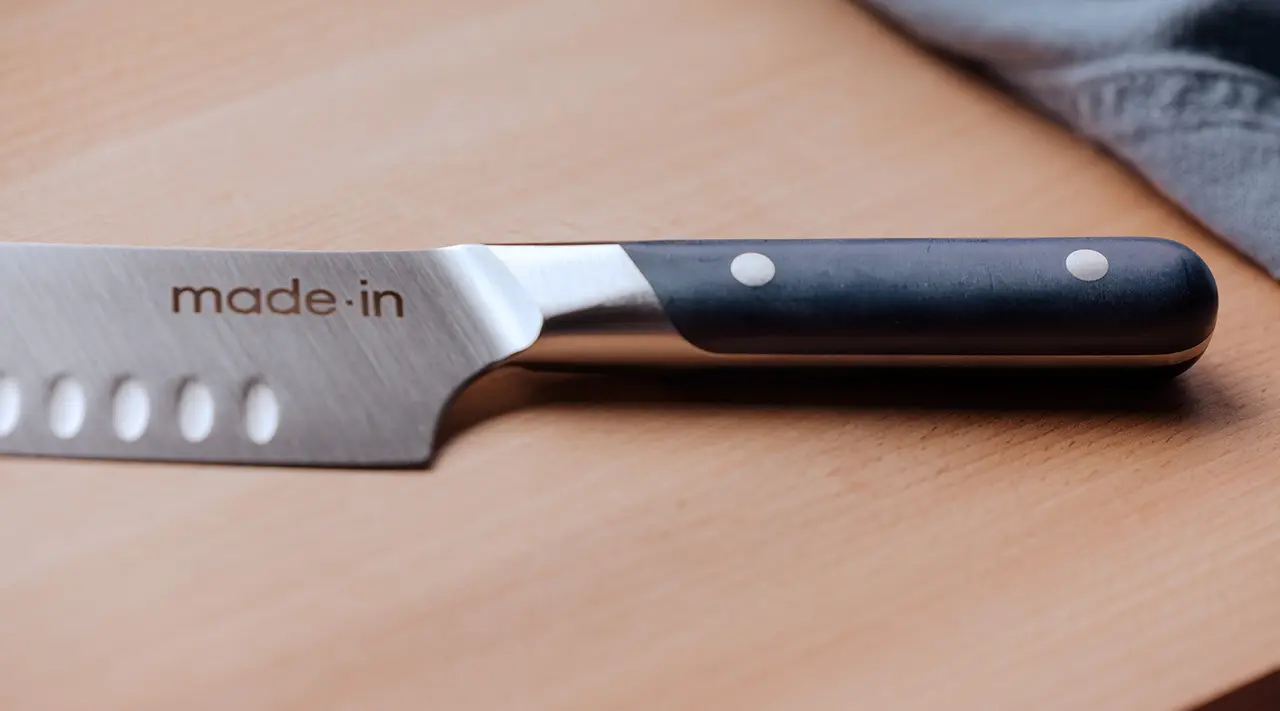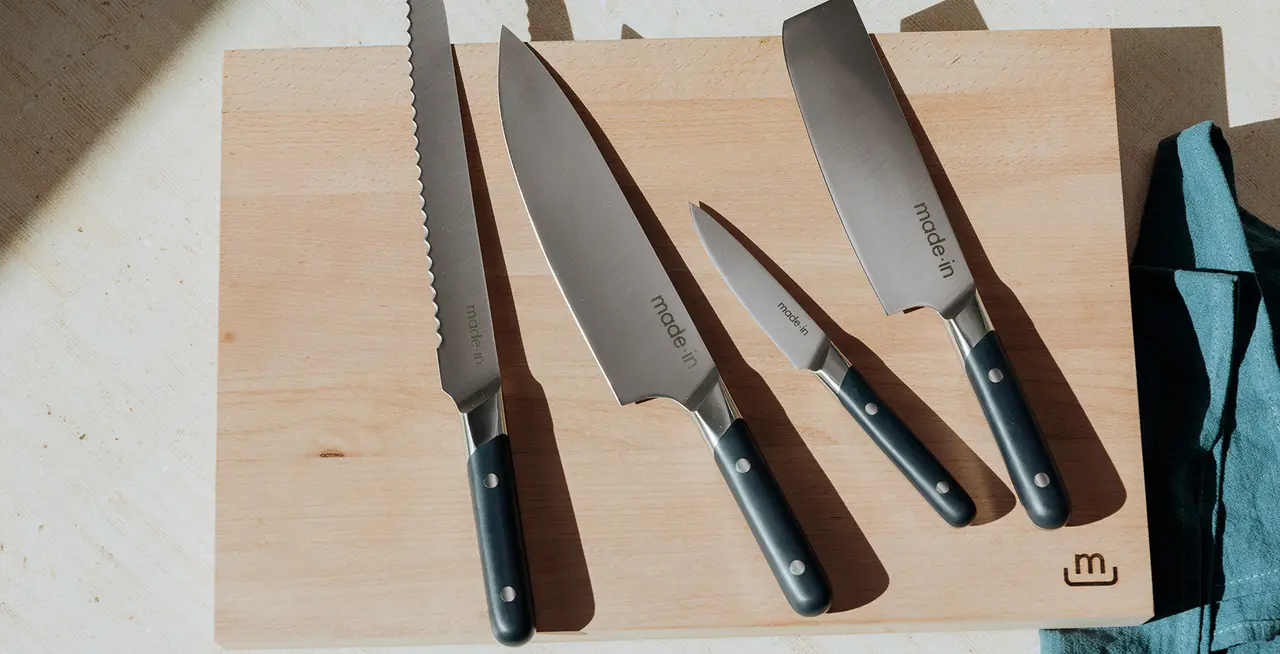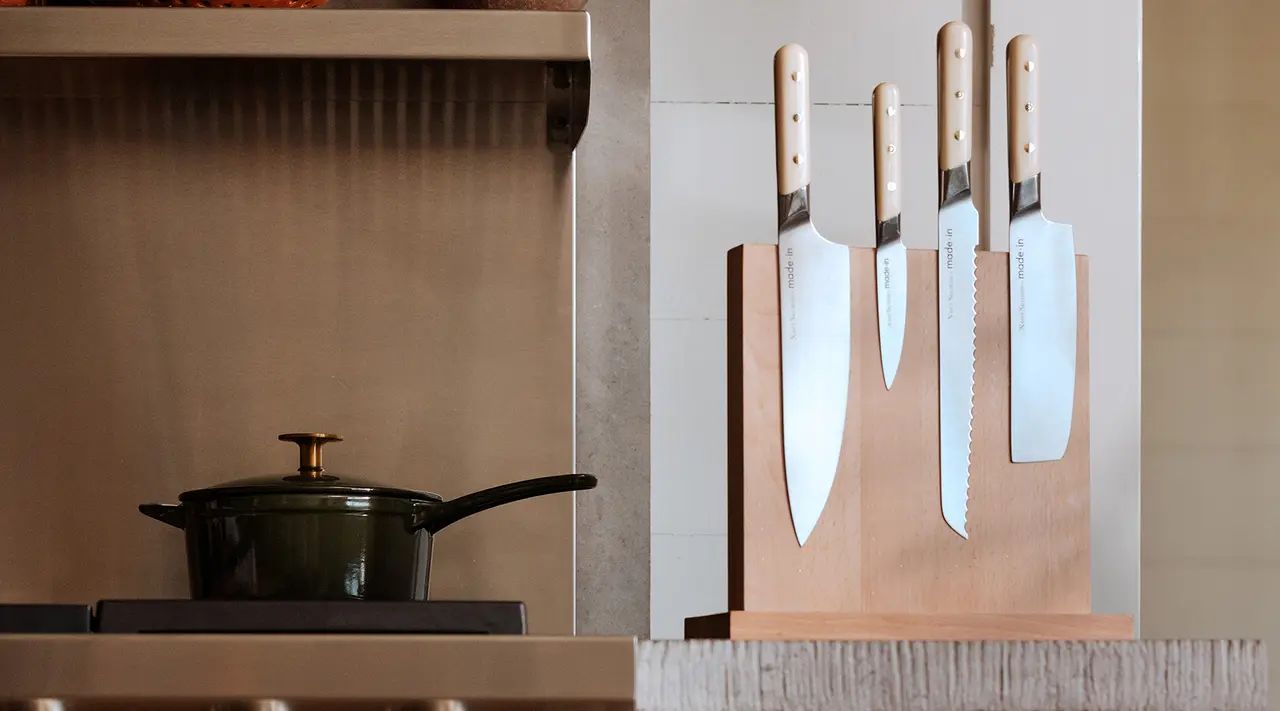An essential tool in any household, we use kitchen knives to slice our vegetables, carve our meats, and mince our herbs. But when we stop to think about the knife we’re using, what do we first consider? How sharp the blade is.
Most of us spend very little (if any) time considering the handle of the knife, and the contribution it makes to the overall function of the tool. However, the handle of the knife, in particular the material that the handle is constructed from, makes a difference in every knife’s performance.
Our team created a guide to walk you through why (and how) knife handles can affect performance, an important feature to consider when shopping for a kitchen knife.
Does Handle Material Really Matter?

While it’s true that a knife’s blade does most of the heavy lifting, the ability to grip the handle of the knife is integral to the knife doing its job. This determines comfort level, hand feel, and overall balance of the knife—all important factors when wielding any type of kitchen knife.
Therefore, when considering a new knife for your kitchen, it’s important to pick one that has a grip that you feel comfortable both handling on a daily basis and maintaining over time.
What are the Different Kitchen Knife Handle Materials?

The materials kitchen knife handles are constructed from can vary widely and have an impact on both performance and care. We dive in deeper below.
Composite
A mixture of resin and wood, composite handles offer a similar visual appearance to wooden handles while remaining at a lower price point due to their synthetic composition. Some knife aficionados say that the weight of composite handles can throw off the balance of the knife, which can affect both cutting performance and ability.
Micarta

A brand of phenolic (or resin) made from linen cloth, Micarta knife handles are lightweight, strong, and good-looking. As Micarta isn’t made with metallic fibers, this material is naturally rust-resistant and highly scratch resistant. These knives are often on the pricier side, and can be slippery unless intentionally designed using textured materials.
POM

POM, or polyacetal, is a common type of plastic widely used in knife handles. This material is particularly popular for knives used in commercial kitchens, as they’re both naturally hygienic and easy to sanitize. These handles are easy to grip and require little to no maintenance, and have a much more comfortable hand feel than pure plastic handles.
Stainless Steel
Stainless steel knife handles are just like their cookware counterparts, known for their durability and affordability. That said, unless these handles are reinforced with rubber or another “grippy” material, they tend to be heavy and slick, which can result in a knife that often feels unbalanced and hard to manage.
Wood

Wooden knife handles are beloved by professional and home chefs alike for their natural non-slip grip, comfortable hand feel and heft, and the natural aesthetic they bring to the kitchen or knife block. These handles tend to be a bit more expensive than POM or micarta, and require maintenance over time to keep the wood from splitting or warping.
The type of wood used for handles varies—we have utilized Ebony, Olive and Amaranth Wood four our handles, but other wood options can include rosewood, oak, and walnut.
What Is the Best Knife Handle Material?

No matter the material, the best knife handle will be on a fully forged and full tang blade. This means that the knife has been forged from a single bar of steel, rather than cut from a sheet, and extends throughout the blade of the knife to give it a balanced feel.
When choosing what handle material is best for you, there are a few factors to consider including grip comfort, price point, and aesthetics. If you rarely reach for a kitchen knife or are just starting to retrofit your kitchen, then opting for a less expensive POM knife may make more sense. If you use your kitchen knives on a daily basis and want an aesthetically pleasing set, then wooden or Micarta handles are likely your best bet.
How to Care for Knife Handles

Once you’ve decided what knife handle is best for you, the next (and arguably more important) step is knowing how to care for it.
Avoid the Dishwasher
The dishwasher’s high heat and abrasive cleaners can both dull the blade of your knife and damage its handle—especially if it's made of wood. To keep your knives in good shape, we recommend hand washing with dish soap, warm water, and a dish sponge.
Read our knife care guide for more tips on keeping your knives clean and well-cared for.
Oil Wooden Handles
Much like some wooden cutting boards, wooden knife handles (like our Olive Wood Collection) benefit from being oiled. Adding a few drops of mineral oil to a wooden knife handle both saturates its pores and prevents water from being absorbed, which can cause the wood to warp and crack over time.
Dry Your Knives
After washing your knives, we recommend drying and storing them immediately. Letting your knives air dry could cause water stains or even rust. Once they’re fully clean, dry with a kitchen towel before storing in a drawer or knife block.
Ready to Shop?
While we recommend a fully forged, full tang knife for your home kitchen, the best judge of a knife handle is the hand it’s in. Whether you’re looking for wooden, micarta, or POM handles, high-quality knives make a difference in every stage of prep and cooking.
All of our full tang, fully forged knives are crafted by a 5th generation bladesmith in the knife capital of the world for an unparalleled cutting experience—regardless of handle type.






























